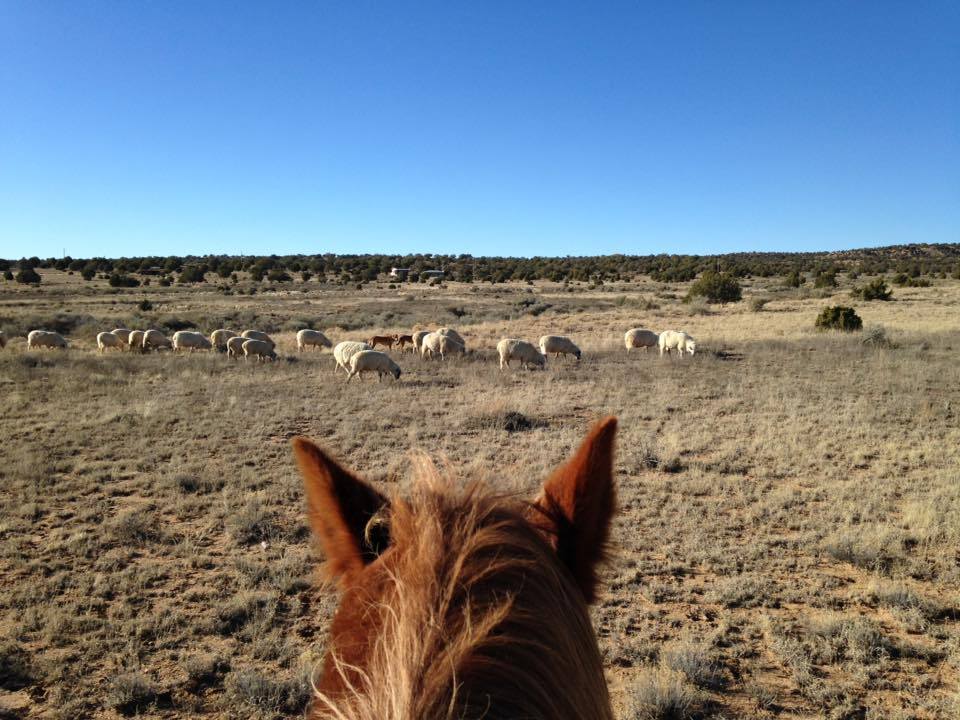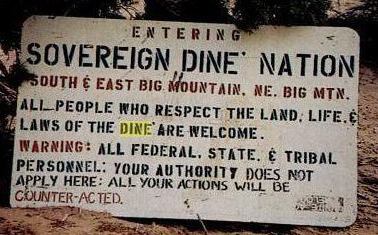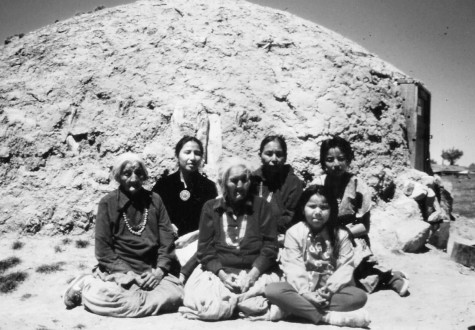
Several years ago, on a brisk spring day in the wild reaches of northeastern Arizona, I was helping an elderly grandmother scrape kernels off a bushel’s worth of dried corn cobs. She spoke no English and I knew little Navajo, so we worked in silence, sitting on a blanket, side by side. The last ear scraped clean, I started to rise. The woman stared at the ground near where I’d been sitting. Then she got on her hands and knees and slowly retrieved one kernel after another, flicking dirt off each piece of corn before carefully placing the stragglers in her woven basket.
My heart sank.
Suddenly, words I’d heard a hundred times before raced through my brain.
Corn is sacred. We use every part of the plant.
In a flash, those words, which had long been abstractions, took on new meaning. A meaning that brought into sharp relief the divide between the world I lived in, where no one would bother with a few kernels of corn, and the one I was visiting. For the Navajo, or Diné, as they call themselves, every plant, every animal, every being in the natural world is sacred: a precious resource that could disappear if you start taking it for granted.
I quickly sat back down and helped her retrieve every last kernel.
That elderly grandmother was following traditions she’d learned as a young girl in a remote corner of the Black Mesa plateau known as Big Mountain. She’d been taught that everything she did in life, even chores, was an act of prayer. She’d been raised in a world where nothing is wasted and knowledge comes not from the modern tools of science but from creation myths, ceremonies rich with history and lessons etched on the landscape in symbols imperceptible to most of us. A world where grandmothers function as living libraries, teaching younger generations all they know about what it means to be Diné.
That world, as I knew it, is slipping away.
Last week, in a scene straight out of the 1930s, when U.S. government officials slaughtered hundreds of thousands of sheep and goats in an ill-conceived livestock reduction policy, Big Mountain families watched long-bed trucks cart their livestock away.
The livestock impoundments are the latest chapter in a decades-old policy to move traditional people off their land.
Over half a billion U.S. tax dollars have been spent to destroy the largest community of American Indians still living according to ancient traditions. In the name of progress, our government relocated thousands of elderly traditional Diné from the only homes they ever knew to prefab houses in suburbs, where they were suddenly faced with bills for mortgages, electricity, running water and indoor plumbing. They had none of that back home, and preferred it that way. Their skills ran toward raising livestock and growing crops in the desert – skills that had no equivalent in a suburban cash economy. When they lost that life, many chose a path of slow death by drinking. Others settled on a quicker way out.
Their fate was predictable. Anthropologists warned of the traumatic impacts of relocating traditional people with such strong ties to the land. The rest of us, for the most part, didn’t listen or didn’t care.
The politicians who authorized the mass relocation seemed barely aware of the wheels they’d set in motion. President Gerald Ford interrupted a skiing trip in 1974 just long enough to sign the Navajo-Hopi Land Settlement Act (P.L. 93-531). In doing so, he ordered the partition of a jointly owned portion of the Navajo and Hopi reservations, a move the bill’s non-Indian authors claimed would avert a violent clash between the tribes over rights to the estimated 21 billion tons of coal lying just beneath the surface of the Black Mesa plateau.
He also ordered the forced removal of over 14,000 traditional people, mostly Navajo, living on the wrong side of the fence.
Yet there was no range war, as both traditional Navajo and Hopi repeatedly made clear. They appealed to Congress, the United Nations and the American public to recognize their sovereign rights to their homelands. They knew their homes straddled energy sources worth billions to mining and power companies. They saw the relocation act as an excuse to clear the coalfields for mining.
 Their appeals fell on deaf ears. While most of us weren’t paying attention, U.S. officials implemented the largest forced removal in this country since the internment of Japanese Americans during World War II.
Their appeals fell on deaf ears. While most of us weren’t paying attention, U.S. officials implemented the largest forced removal in this country since the internment of Japanese Americans during World War II.
Almost all the people I got to know at Big Mountain lived on the wrong side of the fence. Louise Benally was 14 when the relocation act passed. That long-bed trailer on Big Mountain last week was taking her family’s cattle away.
For Bahe Katenay, who has been documenting his community’s traditions and struggle, the reason his people long resisted relocation is simple: “We’re never supposed to abandon those lands because we’re responsible for keeping our obligations to the shrines, especially the main shrine on top of Big Mountain.”
“The spirits are going to wonder what happened to us,” one elder told Katenay. “They’ll think, ‘Well these humans don’t care anymore so why bring them good health, why bring them good crops, rain, and water? They’re not giving anything back.’ ”
I often heard the grandmothers speak of feeling torn apart by the tension between the federal law that told them they were trespassers on their own land and the sacred covenant they had with the Creator. If they followed the federal law, they would have to violate that sacred trust. They would have to leave behind the place where every plant, every tree and even the wind knew their name.
Many consider such ideas unscientific, superstitious. They question the value of knowledge wrapped up in talk of sacred obligations. Too many of us dismiss such beliefs as based on a worldview steeped in supernatural notions that have little to do with the way the world works.
Too few of us get the opportunity to interact in meaningful ways with Indian people. If you don’t spend significant chunks of time around traditional people, you can easily miss what are essentially lessons for sustainable living, based on centuries of observing the natural world, codified in the rituals of traditional life.
 Twenty years ago, Diné elders warned that coal must stay in the ground to keep the planet healthy. They weren’t just relying on stories from the past. They were witnessing the environmental consequences of sucking a billion gallons of water a year from the Navajo Aquifer for decades to run coal through a slurry line to a generating plant over 270 miles away. Today, climate scientists are saying the same thing.
Twenty years ago, Diné elders warned that coal must stay in the ground to keep the planet healthy. They weren’t just relying on stories from the past. They were witnessing the environmental consequences of sucking a billion gallons of water a year from the Navajo Aquifer for decades to run coal through a slurry line to a generating plant over 270 miles away. Today, climate scientists are saying the same thing.
In some ways the story is over. Many of the thousands of Diné who were forced to relocate have died, few from natural deaths. But, thankfully, some of their children and grandchildren are still on the land, or return when they can to participate in ceremonies and keep the lessons alive.
It’s long past time to recognize that these traditions represent deep repositories of knowledge that hold value for all of us. And that Western science is not the only path to understanding the natural world.
By dismissing traditional worldviews as irrelevant to our daily lives, we risk letting not just an ancient body of knowledge slip away, but also the culture and people who depend on it.
Clues to the meaning of these traditions run through the Diné language. The Diné have no word for religion, because there’s no line between sacred and secular. They also have no word for relocation. The closest translation, Diné elders say, is to disappear.
Top photo: Courtesy of a Big Mountain resident
Middle and bottom photos: From the files of Big Mountain Support Group
One thought on “Guest Post: When Worlds Collide”
Comments are closed.